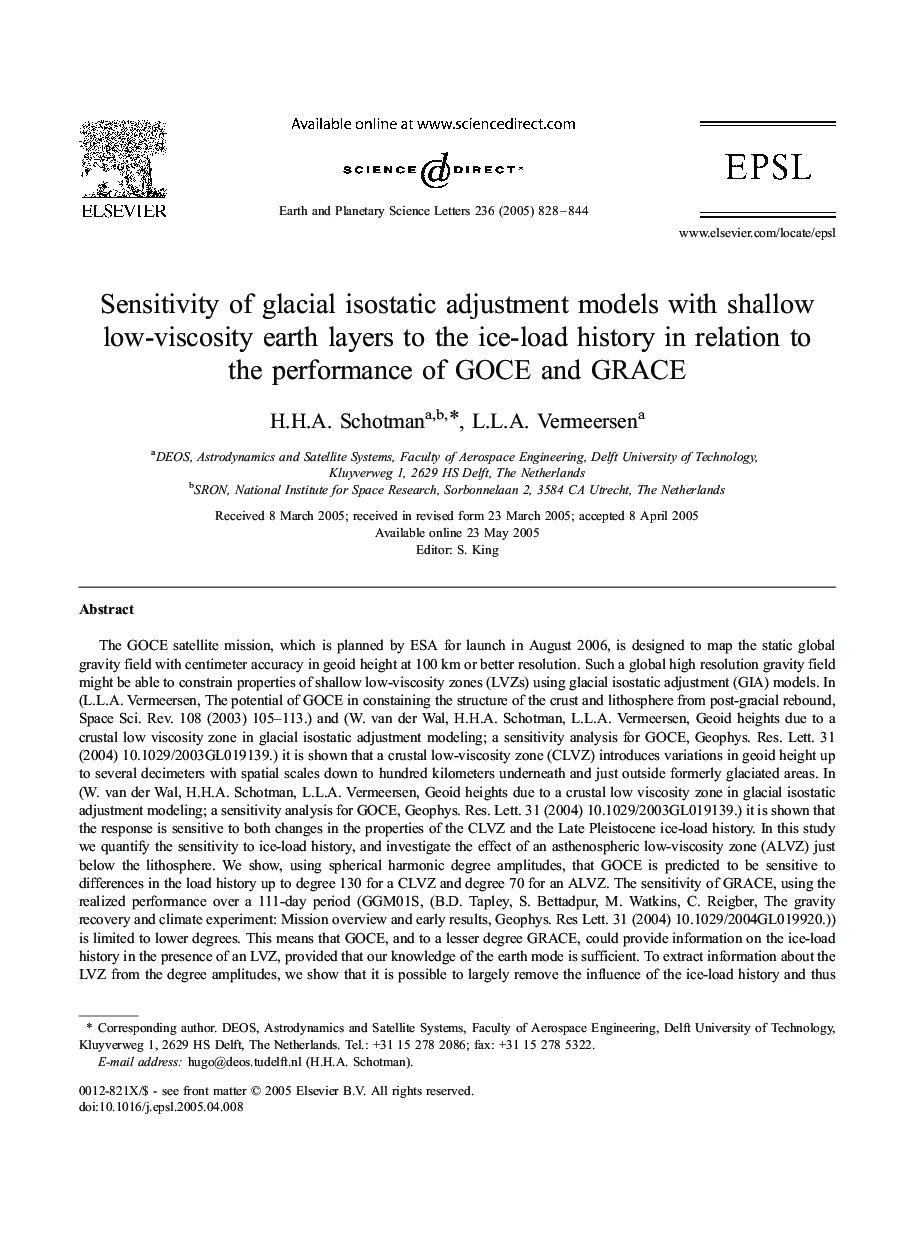| Article ID | Journal | Published Year | Pages | File Type |
|---|---|---|---|---|
| 9522673 | Earth and Planetary Science Letters | 2005 | 17 Pages |
Abstract
The GOCE satellite mission, which is planned by ESA for launch in August 2006, is designed to map the static global gravity field with centimeter accuracy in geoid height at 100 km or better resolution. Such a global high resolution gravity field might be able to constrain properties of shallow low-viscosity zones (LVZs) using glacial isostatic adjustment (GIA) models. In (L.L.A. Vermeersen, The potential of GOCE in constaining the structure of the crust and lithosphere from post-gracial rebound, Space Sci. Rev. 108 (2003) 105-113.) and (W. van der Wal, H.H.A. Schotman, L.L.A. Vermeersen, Geoid heights due to a crustal low viscosity zone in glacial isostatic adjustment modeling; a sensitivity analysis for GOCE, Geophys. Res. Lett. 31 (2004) 10.1029/2003GL019139.) it is shown that a crustal low-viscosity zone (CLVZ) introduces variations in geoid height up to several decimeters with spatial scales down to hundred kilometers underneath and just outside formerly glaciated areas. In (W. van der Wal, H.H.A. Schotman, L.L.A. Vermeersen, Geoid heights due to a crustal low viscosity zone in glacial isostatic adjustment modeling; a sensitivity analysis for GOCE, Geophys. Res. Lett. 31 (2004) 10.1029/2003GL019139.) it is shown that the response is sensitive to both changes in the properties of the CLVZ and the Late Pleistocene ice-load history. In this study we quantify the sensitivity to ice-load history, and investigate the effect of an asthenospheric low-viscosity zone (ALVZ) just below the lithosphere. We show, using spherical harmonic degree amplitudes, that GOCE is predicted to be sensitive to differences in the load history up to degree 130 for a CLVZ and degree 70 for an ALVZ. The sensitivity of GRACE, using the realized performance over a 111-day period (GGM01S, (B.D. Tapley, S. Bettadpur, M. Watkins, C. Reigber, The gravity recovery and climate experiment: Mission overview and early results, Geophys. Res Lett. 31 (2004) 10.1029/2004GL019920.)) is limited to lower degrees. This means that GOCE, and to a lesser degree GRACE, could provide information on the ice-load history in the presence of an LVZ, provided that our knowledge of the earth mode is sufficient. To extract information about the LVZ from the degree amplitudes, we show that it is possible to largely remove the influence of the ice-load history and thus compute spectral signatures for different properties of the LVZ. We focus on the continental shelf-areas of western Europe to show the sensitivity of estimates of present-day sea level change to the inclusion of an LVZ.
Keywords
Related Topics
Physical Sciences and Engineering
Earth and Planetary Sciences
Earth and Planetary Sciences (General)
Authors
H.H.A. Schotman, L.L.A. Vermeersen,
